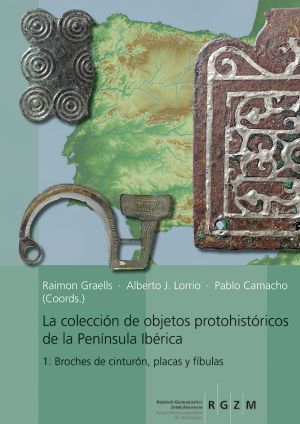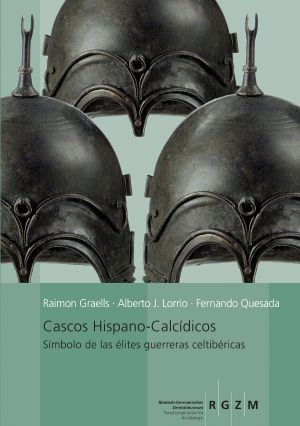Graells, Raimon
La colección de objetos protohistóricos de la Península Ibérica: 1: Broches de cinturón, placas y fíbulas
The collection of materials from the Iberian Peninsula held at the RGZM consists of around 200 objects, divided into two groups with particular characteristics and problems: clothing ornaments and weapons.
This first volume presents objects related to clothing and/or personal adornment that correspond to the first acquisitions of Hispanic pieces made by the RGZM at the beginning of the 20th century.
The materials are necessarily divided by categories and types, as in a traditional catalogue, but the concern for methodological changes and the renewal of explanatory paradigms in the study of Hispanic protohistory has forced the authors to take certain precautions that make this catalogue an experiment. The aim has been to compensate for the lack of contexts with an intensive study and discussion of the parallels of each piece, turning each chapter into brief monographic studies. This approach makes it possible to characterise the area of origin and chronology of each specimen in the collection. It is a demanding work that attempts to go beyond the main function of the catalogue (that of compiling pieces from the antiquities market) and enters into the arduous work of scientific and patrimonial recovery, presenting the data for discussion.
This project to study the Iberian collection of the RGZM began in Mainz in 2012 on the initiative of the institution's management, as a contribution to the comprehensive study and dissemination of its archaeological collection. The success of the publication of this first part is the result of the coordination carried out by the authors (researchers from the RGZM and the University of Alicante) and the collaboration of specialists from different Spanish institutions.
Volume 2, see here.
Cascos hispano-calcídicos: Símbolo de las elites guerreras celtibéricas
The Hispano- Chalcidian helmet is a fully Hispanic type, datable to between the 4th and 2nd century BC and with a mainly Celtiberian concentration. However, this type has recently been identified following the looting and sale of a number of specimens, probably from Aranda de Moncayo. The name is explained by its shape, which is reminiscent of Chalcidian helmets and their Italic derivatives, but which takes important morpho-technological details from local Celtiberian production.
Although there is considerable variability among the 32 specimens identified so far, we can consider this to be the result of individualized production. But apart from these variations, the Hispano- Chalcidian group has an easily recognizable predetermined design: a shell with openings for the ears, long muzzle-guard, articulated cheeks (the rim of these pieces is reinforced by riveting a pseudo-hemispherical ribbon), the attachment of ribbons on the front and the systematic application of a complex decorative structure formed by feathers inserted in lateral appliqués and by the vertical lophos, supported between the fork of the cylindrical appendage which is documented to be fixed by three rivets on the upper part of the shell and the rings on the front and dorsal part of the shell.
The study presented here analyses the morphological and decorative characteristics in order to approach their production and the meaning of the weapons themselves: protective elements and, at the same time, vehicles with which to express different messages of power, military rank or influences acquired during the course of mercenary activity in southern Italy.








